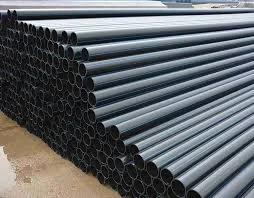Dec . 13, 2024 10:36 Back to list
hdpe drainage pipe
Understanding HDPE Drainage Pipe A Comprehensive Guide
High-Density Polyethylene (HDPE) drainage pipes have gained popularity in recent years due to their impressive strength, flexibility, and resistance to corrosion. As we face increasing environmental challenges, the demand for durable and sustainable drainage solutions has skyrocketed. This article will delve into the properties of HDPE drainage pipes, their advantages, applications, installation considerations, and maintenance tips.
What is HDPE?
HDPE is a thermoplastic polymer made from petroleum. It is characterized by its high strength-to-density ratio, making it an ideal material for various applications, including drainage systems. The production process of HDPE involves polymerizing ethylene, which results in a material that can withstand extreme conditions.
Advantages of HDPE Drainage Pipes
1. Durability and Longevity HDPE pipes are known for their remarkable durability. They are resistant to chemicals, UV radiation, and environmental stresses, which means they can last for decades without succumbing to degradation. This longevity reduces the need for replacements and repairs.
2. Flexibility Unlike traditional materials like PVC or concrete, HDPE is highly flexible, allowing it to withstand ground movements and shifting soils. This flexibility reduces the risk of cracking and breaking, ensuring that the drainage system remains functional over time.
3. Lightweight HDPE pipes are significantly lighter than their counterparts, making transportation and installation easier and more cost-effective. This lightweight nature also reduces the amount of machinery required on-site, leading to less environmental impact during installation.
4. Cost-Effectiveness Although the initial investment in HDPE drainage pipes can be higher than that of alternative materials, the long-term savings due to lower maintenance costs and extended lifespan make it a cost-effective solution for drainage systems.
5. Sustainability HDPE is recyclable, and its production process has a lower environmental impact compared to traditional materials. This makes it a more sustainable option for modern construction and utility projects.
Applications of HDPE Drainage Pipes
HDPE drainage pipes are versatile and can be utilized in various applications, such as
- Stormwater Management They are widely used for stormwater drainage systems, allowing for efficient water flow and reducing the risk of flooding. - Agricultural Use Farmers often utilize HDPE pipes for subsurface drainage to improve soil moisture levels and crop yield.
- Municipal Infrastructure Many cities are adopting HDPE drainage solutions for their storm sewer systems, thanks to the material's durability and efficiency.
hdpe drainage pipe

- Industrial Applications Industries requiring chemical handling and drainage turn to HDPE pipes, as they can withstand aggressive substances without breaking down.
Installation Considerations
Proper installation of HDPE drainage pipes is crucial for optimal performance. Here are some key considerations
- Trenching It is essential to create a trench that accommodates the pipe diameter while allowing enough space for proper backfilling. This helps in maintaining stability and supporting the pipe.
- Using the Right Fittings Ensure that all fittings and joints are compatible with HDPE to prevent leaks and maintain the integrity of the system.
- Depth of Burial HDPE pipes should be buried to the recommended depth to protect against surface traffic and environmental factors.
Maintenance Tips
Maintaining HDPE drainage pipes is generally straightforward due to their durability, but periodic checks are recommended
- Regular Inspections Inspect the drainage system for blockages or damages. Early detection can prevent more significant issues later.
- Cleaning Clear any debris or sediment build-up to ensure smooth water flow.
- Monitoring for Erosion Check around the pipe for signs of erosion, especially in areas subject to heavy rain or flooding.
Conclusion
In conclusion, HDPE drainage pipes are a robust, flexible, and sustainable solution for modern drainage needs. Their exceptional characteristics and ease of installation make them an attractive choice for a wide range of applications. As environmental considerations become increasingly important, investing in HDPE drainage systems can contribute to a more sustainable future while ensuring efficient water management.
-
High-Quality PPR Pipes and Fittings Durable ERA PPR & PVC PPR Solutions
NewsJul.08,2025
-
Black HDPE Cutting Board - Durable, Non-Porous & Food Safe HDPE Plastic Cutting Board
NewsJul.08,2025
-
High-Quality CPVC Panel Durable HDPE & PVC Panels Supplier
NewsJul.08,2025
-
Double PE Welding Rod Supplier - High Strength, Durable & Versatile Welding Solutions
NewsJul.07,2025
-
High-Quality PVC-O Pipe Supplier Durable 75mm PVC Pipe & Connections Leading PVC Pipe Company
NewsJul.07,2025
-
HDPE Drainage Pipe Supplier – Durable & Corrosion-Resistant Solutions
NewsJul.06,2025

